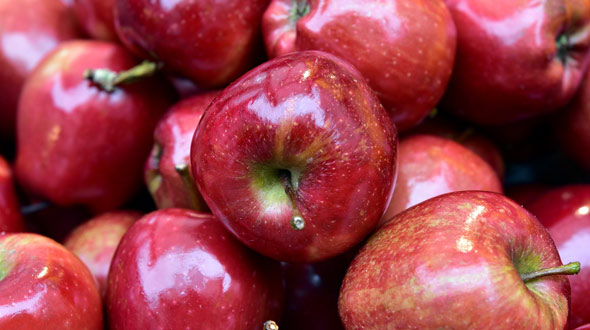
So you want free apples for life? It’s as simple as planting a tree, but there are some things you must know before trying to grow an apple tree in your backyard.
Growing apple trees may seem easy, and it is when you know how to acclimate them and care for them as they mature. By using simple care techniques, you’ll be harvesting homegrown apples before you know it.
toddsmariettatreeservices.com gathered information on how to acclimate, plant, and care for apple trees until they begin to bear fruit.
Apple Trees from Seeds, Seedlings, or Saplings
If you want to grow and harvest your favorite apples, your first decisions are which species of apple and in what phase of growth to start. The following will help you decide:
Starting from Seeds – If you can create and maintain a controlled environment for seeds to sprout and flourish in, it is the longest but most engaging way to grow your apple trees.
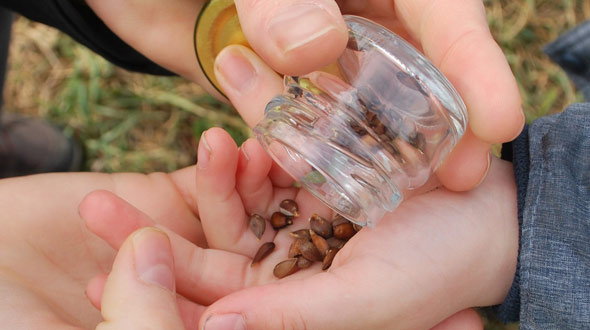
Eating an apple and retrieving the seeds from the core may seem like a logical way to get started, but store-bought hybrid apples typically do not have viable seeds or seeds that will grow true to the species. Your best bet is to visit your local nursery or the plant and garden section of your local home improvement store for viable, fertile seeds.
Starting from Seedlings – Seedlings are a great way to start growing a tree. However, they are still fragile and require a controlled environment for the first few months of growth. Seedlings should be allowed to acclimate to their new environment for 5 to 10 days before being transplanted to a larger container.

Once seedlings “get a feel” for their new location, they tend to grow fairly rapidly. However, seedlings will require several transplants before finally moving them outside for acclimation and to their permanent location.
Starting from Saplings – This is perhaps the easiest way to grow your apple tree. Besides circumventing all of the care and precaution needed for seeds and saplings, saplings are almost ready to be planted in their permanent location.
Saplings should be acclimated to the outside environment by leaving them in partial shade for 3 to 4 hours daily, for 7 to 10 days. Once a sapling has been acclimated, it can be transplanted to its permanent outside location.
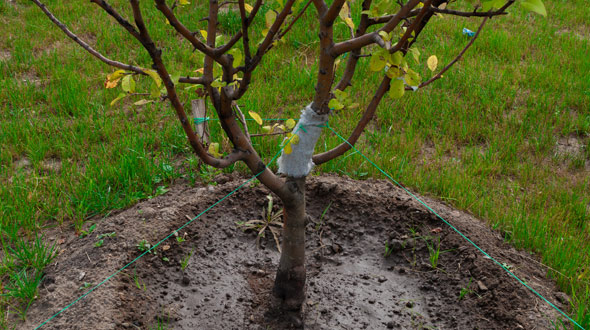
Apple Tree Needs
Before planting your apple tree in its permanent location in late winter or early spring, read toddsmariettatreeservices.com/expert-shares-5-important-tree-planting-tips/, then consider these specific apple tree requirements:
Sun Requirements – For best growth and fruiting, your apple tree should get full sunlight (this is 6 or more hours of direct summertime sunlight daily).
Spacing Requirements – Regular apple trees require 25 to 30 feet between trees; semi-dwarf apple trees need 15 to 20 feet, and the dwarf species can be spaced 10 to 15 feet apart.
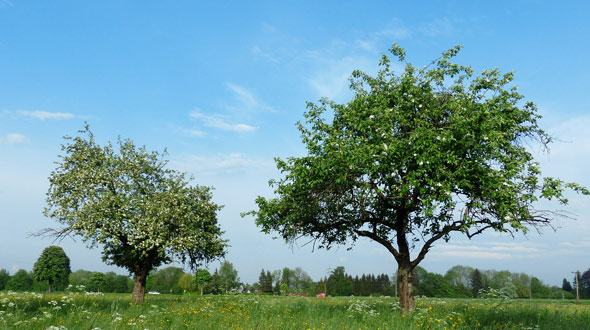
Soil Requirements – Apple trees can thrive in soils ranging from medium textured clays to gravelly sands. However, the healthiest trees and best crops are found on well-drained fertile sandy soils and loams.
Apples do best in neutral to slightly acidic soil with a pH between 7.0 and 5.8. You can amend the pH level in acidic soil by incorporating lime before transplanting.
Crown rot (Phytophthora cactorum) is a common issue in poorly drained soil. Apple tree rooting is typically shallow, and wet soils tend to restrict root development. This subsequently results in poor anchorage and reduced extraction of nutrients for tree development.
Watering Requirements – Although apples contain high water content, apple trees do not need daily heavy watering. However, you should adjust your watering schedule to avoid dry soil and drought stress to your trees.
Water your trees in the early morning, or if your schedule doesn’t permit it, early evening watering will help your apple trees thrive.
Your watering schedule should increase in frequency as your apple trees begin to bear fruit, and return to normal after the harvesting period.
Pruning Requirements – Prune your apple trees in late winter, while the trees are in a state of dormancy. Remove any downward growing branches and dead or diseased branches; also remove any suckers growing from the base of the tree or within the root spread.
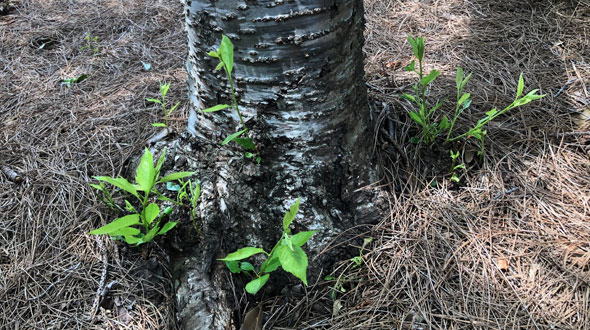
As pruning stimulates new growth, only emergency pruning (diseased branches, weather damage, etc.) should take place in late summer or fall. Any growth late in the season will not have time to harden in preparation for winter months dormancy and will die.
Pollination Requirements – On average, newly planted apple trees require 2 to 5 years to establish, mature, and bloom. Some species take 5 to 10 years to bloom and bear fruit. Like all fruit trees, pollination is required for apple trees to bear fruit.
Unless the species is self-fertile (Anna, Golden Dorsett, Gordon, etc.), cross-pollination is required. However, self-fertile species bear more heavy crops when cross-pollinated.
Proper pollination occurs when trees of different varieties bloom at the same time. Trees of the same variety won’t get the job done.
If you only have room for one apple tree and natural cross-pollination isn’t possible, you can purchase apple pollen from a local nursery and pollinate the tree by hand (be sure that the species are compatible for best results).
Watch this video to learn more about apple tree pollination.
Growing Apple Trees
With all the free apples after your first harvest, will you make apple pies, apple fritters, or apple sauce? By following these simple planting and care techniques, your apple trees will thrive and provide free apples for years to come.
In this article, you discovered how to acclimate your saplings, planting requirements, and care tips to give your apple trees their best chance to mature, thrive, and bear fruit.
It’s not enough to just plant an apple tree and hope it does well. For your apple tree to thrive, you must be knowledgable and pay attention to a host of easy to learn factors.
Sources:
https://www.yara.us/crop-nutrition/apple/agronomic-principles/
http://extension.uga.edu/publications/detail.html?number=C740&title=Home%20Garden%20Apples
https://www.allotment-garden.org/fruit/apples-growing/
Todd’s Marietta Tree Services
(678) 505-0266

No comments:
Post a Comment